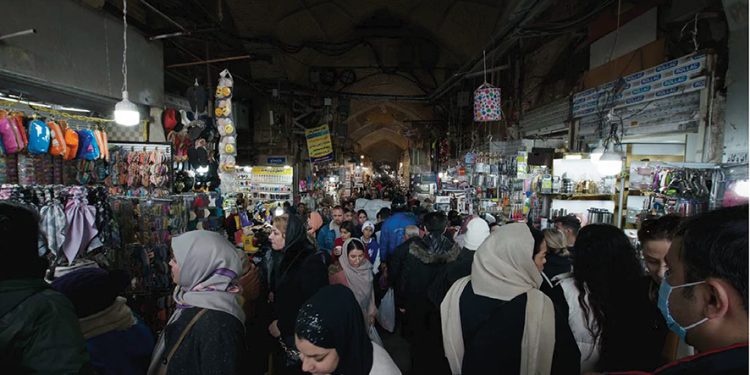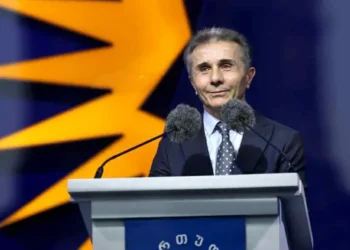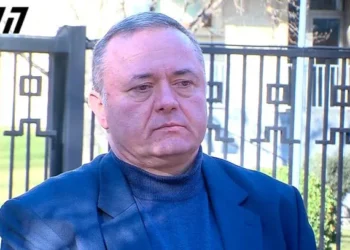Pariahs around the globe – from North Korea to Syria to Eritrea to Venezuela – find themselves forcibly thrust into the Kremlin’s orbit after being sanctioned to the hilt and cut off from capital markets. Make no mistake, however; Iran is arguably the motherlode of malignant forces out there owing to how dangerously interwoven fundamentalist Islam is with the tyranny its clerics exercise over the public at large. Whether Russia or China is the lesser of two evils vis-á-vis posing an existential threat to the free world remains up for debate, given the comparatively greater geopolitical clout they wield. That said, and by virtue of their socialist past, religion has historically taken a back seat and had no real bearing on internal governance. The Iranian populace, on the other hand, has been dealt an exceptionally raw deal by the zealots who usurped power back in 1979. Besides the masses having their most rudimentary civil liberties withheld, women in modern-day Iran contend with gender apartheid and settle for second-class status at best within an inherently chauvinistic society.
Far from being brushed aside as a domestic affair, the ongoing nationwide demonstrations this time around were a major wake-up call for Western powers that have long championed female empowerment yet buried their heads in the sand with respect to Iran. If anything, Tehran brazenly throwing its weight behind Moscow in the way of drones supply and technical assistance illustrates the Ayatollahs’ penchant for sowing chaos well beyond the immediate neighborhood. The Islamic Republic shares land and sea borders with 13 other countries – all of whom are fair game for a theocratic regime bent on expanding its sphere of influence. In particular, the Persian Gulf sheikhdoms next door have repeatedly sounded the alarm over the Iranian ruling elite seeking to “export their revolution” by any means necessary. Having failed to do so at the height of the Arab Spring, when regime change was ripe for the picking, or in the decade thereafter, Iran’s sights are now firmly set on the strategically-located South Caucasus.
Already on a collision course with Azerbaijan over the latter allegedly redrawing borders in the aftermath of the 2020 Nagorno-Karabakh conflict and inciting a separatist movement among Iran’s 30-million stronghold ethnic Azeri minority, the hardline government of President Ebrahim Raisi is not one to let such antagonism slide and carry on with business as usual. The armed attack on Azerbaijan’s embassy in Tehran last month is widely believed to have been an inside job, not least since the subsequent investigation carried out by local authorities remains shrouded in opacity, while the assailant appears to have gotten away scot-free. The common denominator at play when it comes to petty sabre-rattling by the Islamic Revolutionary Guard Corps (IRGC) and their surrogate militia across the region is Israel. It is no secret that bilateral ties between Baku and Tel Aviv have scaled new heights and taken on a multifaceted dimension of late, so much so that Azerbaijan recently inaugurated its first diplomatic mission to Israel.
Clearly, the very notion of a fellow Shia-majority jurisdiction cosying up to so-called “little Satan” ruffles the feathers of Iran’s jingoistic mullahs. Israel, renowned for its cutting-edge innovation and state-of-the-art military equipment, is ramping up weapons sales and sophisticated spyware provision to the Azerbaijanis with the goal of countering a mutual foe. Meanwhile, Iran’s intelligence apparatus has an oven-ready pretext to launch a cross-border insurgency in the name of protecting national security – not dissimilar to the Kremlin’s nuclear blackmail aimed at dissuading NATO allies from arming Ukraine.
Supreme leader Ali Khameini vowed to exact revenge for the 2020 assassination of Quds Force commander Qasem Soleimani, and has kept the world guessing as to what his next “chess move” will be. Adamant that the US-led taking out of his closest confidante in Baghdad had all the earmarks of Mossad involvement together with Azerbaijan’s fairly sizeable Jewish community may render it fertile ground for long overdue reprisal.
Subverting dynastic rule in its backyard has been a key component of Iran’s clandestine foreign policy ever since the late Shah’s ousting. In the case of Saudi Arabia and the other five GCC monarchies, Tehran’s paranoia stems from their neighbors’ territory being used as a launching pad to propagate American and Zionist interests throughout the Middle East. Needless to say, Azerbaijan is a whole new ball game from the IRGC’s vantage point. The Aliyev family has been at the helm ever since Azerbaijan’s independence in 1991 and run the resource-rich Caspian nation like its personal fiefdom. Admittedly, it is not Baku’s kleptocracy or crony capitalism that the Iranians take issue with so much as their constitutionally-enshrined principle of secularism. While most Western observers hail Azerbaijan as a bastion of modernity which does not impose a draconian variant of Sharia law on the masses, Iran sees these liberal policies through an entirely different prism – namely a Soviet-legacy clampdown on religion with the baton merely passed down from one generation to the next. All the more worrisome is that Iranian youth are beginning to look northwards and appreciate the sheer freedom as well as the peace dividend they could potentially enjoy once their country is bereft of fanatical leadership.
Under normal circumstances, big brother Russia would never entertain the prospect of a third party breeding extremism in the post-USSR space. However, Azerbaijan has made no bones about turning its back on Moscow, whom they do not consider an honest broker in their territorial dispute with Armenia.
Worse still, there is overt receptivity by both sides to Brussels supplanting the Kremlin as the chief mediator. It is worth recalling that earlier this year, Armenia even declined to host military drills by the Russia-led Collective Security Treaty Organisation (CSTO) – a sorry excuse for a bulwark to NATO, whose only function thus far has been quashing large-scale demonstrations in a handful of ex-USSR republics. In essence, President Vladimir Putin has come to a de facto memorandum of understanding (MoU) with Iran that was established with his strongman ally Ramzan Kadyrov following the Second Chechen War, specifically that Jihadists have free reign to run riot within their own respective confines, so long as this radical movement does not spill over into the Russian Federation proper. With Iran fast emerging as an indispensable partner in the midst of Russia’s de-dollarization agenda, and a counterweight to prevent Turkey from turning a “brotherly” state into a quasi-protectorate, Putin is content to look the other way and sign off on the Iranians cutting Azerbaijan down to size.
As for Georgia and Armenia, they are both virtually signatories of their own death warrants. The laissez-faire approach taken by these two governments towards the uncontrolled influx of Russian draft dodgers will come home to roost sooner or later. Despite Tbilisi’s macroeconomic indicators looking promising in the last quarter, the capital injection from this new wave of unvetted arrivals has not trickled down to Georgian commoners – most of whom are far worse off in real terms and barely managing to keep their heads above water with the skyrocketing cost of living. The extent to which Georgia’s “European perspective” has dimmed, courtesy of the current administration’s soft spot for Russia and the cabal of tertiary sector war profiteers, is an especially bitter pill to swallow for the country’s Europhile citizenry.
An almost identical phenomenon exists in Armenia, which finds itself smack-bang on the Russian exodus belt and now plays host to a disproportionately large diaspora of Putin’s foot soldiers. It would be premature to think that budding Iranian exiles are not taking note of the ease with which they can simply breeze into Georgia or Armenia visa-free under the guise of opposing their regime. Akin to the detrimental impact the 2015 refugee crisis had Western Europe’s tourism industry, an overrepresentation of Russians is slowly but surely robbing both fiercely patriotic nations of the authenticity and demographic homogeneity they pride themselves on.
Now that Tehran’s complicity in the war is out in the open, it makes little sense for the collective West to wait until the 25th hour before enforcing appropriate deterrence measures. Seeing as Iran is nowhere near as deeply integrated in the global economy as the likes of Russia or China, and carries out direct trade with just five countries according to its Chamber of Commerce, there should be nothing stopping G7 members from throwing the kitchen sink at the Ayatollahs in a bid to starve their state coffers of all viable income streams. The European Union has a golden opportunity to make amends for its botched response to Russian aggression by ruthlessly going after Iran and, by extension, putting a spoke in the wheel of pet projects like Beijing’s Belt and Road Initiative (BRI) and the International North-South Transport Corridor, which Indo-Russian relations hinge on going forward.
At the same time, there are telltale signs of supposedly neutral states gravitating towards the Ukrainian camp purely out of spite for Iran – be it the recent visit of Saudi Arabian foreign minister Prince Faisal bin Farhan Al Saud to Kyiv, Pakistan sending military aid to Ukraine, or Israel voting in favor of a UN resolution a couple of weeks ago demanding the withdrawal of Russian troops from Ukraine. The net negative of being in cahoots with another empire-building behemoth suggest that it is only a matter of time before the chummy Iran-Russia rapport comes to blows. Should this fallout transpire, Transcaucasia will pay the heaviest price and emerge as the most likely proxy battleground in which differences are aired.
Analysis by Saahil Menon














